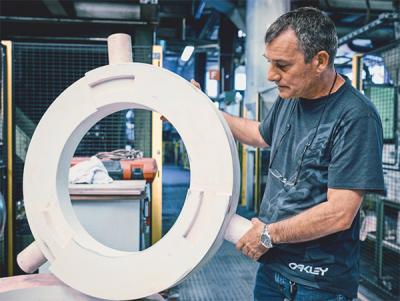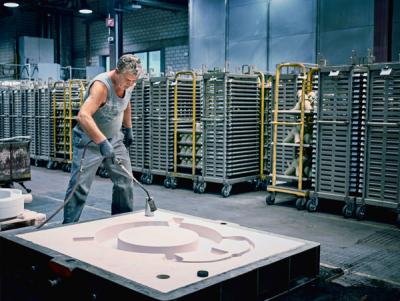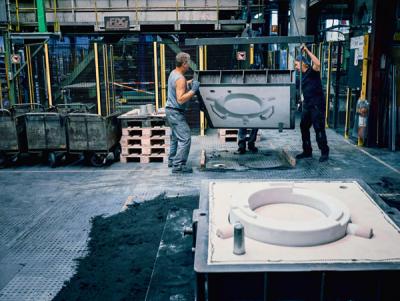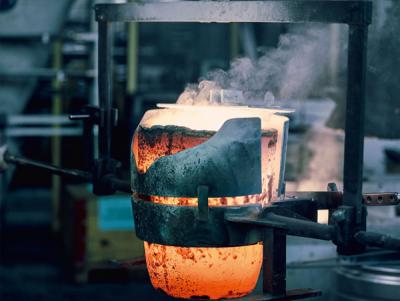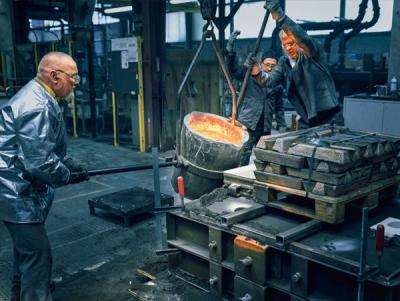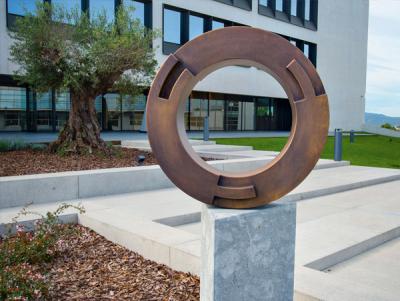Sculpture with symbolic power
At the core of the Endress+Hauser corporate culture is the strong relationship between customers, employees and shareholders. The sculpture Loyalty and Responsibility illustrates what holds the innermost parts of the company together.
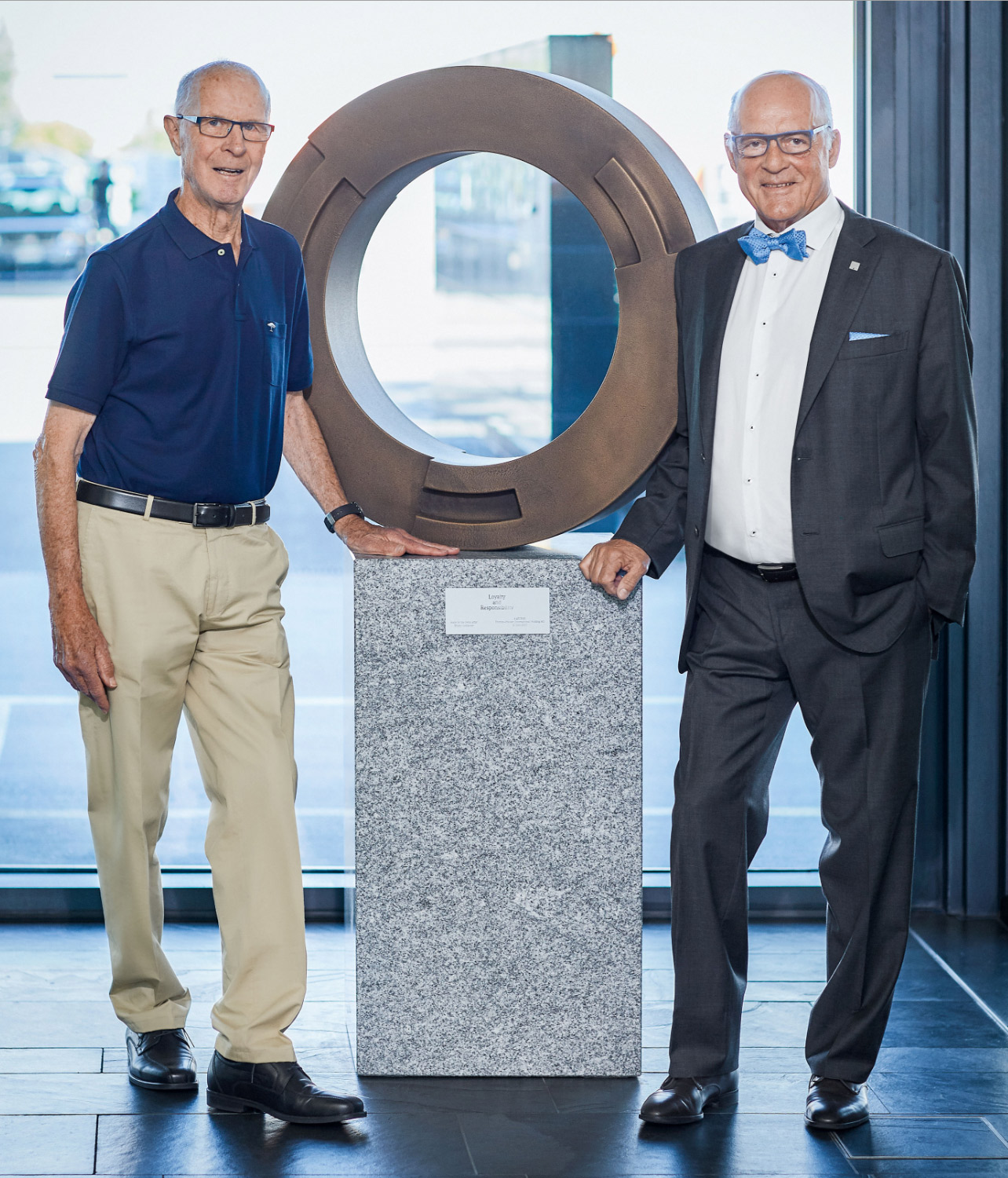
What does a technology company have to do with art? At first glance, not much. On one side you have the world of highly precise measurements, the laws of physics and indisputable metrics. And on the other, the sphere of aesthetes, where is there no right or wrong and where personal taste matters much more than expert analyses.
Still, Endress+Hauser is not just a high-tech company. It’s also a family company. And family companies, which are marked by a strong focus on values and a deeply rooted corporate culture, are different. There is good reason why the Endress+Hauser claim – People for Process Automation –puts the emphasis on people. “People are what make the difference and what lead to excellence in a company,” says Klaus Endress, President of the Supervisory Board, with conviction.
Customers, employees and shareholders all have different roles in this corporate fabric. But they all carry the company and they all depend on one another. “All three feel and do their best when they conduct themselves loyally and responsibly,” explains Klaus Endress. When shareholders put the bulk of the profits back into the company, better products can be developed, for instance. This leads to satisfied customers, generates more business and creates new jobs. At the end of the day, everyone benefits.
84cm
What evolved was a 84-centimeter bronze ring with three equally large, intertwined segments symbolizing customers, employees and shareholders.
The language of art
When Klaus Endress was serving as CEO of the Group, nurturing and cultivating this corporate culture was an important issue for him – and it still is. For many years now, he has also been relying on the communicative power of art. With the sculpture Loyalty and Responsibility, which he commissioned Swiss artist Bruno Guthauser to create, he has conceived a work of art that gives form to the idea of a “good company”.
As so often happens, the idea came to Klaus Endress during a nature excursion. While on one of his daily bicycle rides with his dog, he chanced upon the artist who frequented the same section of woods. It wasn’t long before the two were having discussions that often revolved around the subject of loyalty and responsibility. “As an iron sculptor, I knew he had the means to implement such an idea. So one day I asked if he could imagine transforming these thoughts into an artistic form,” explains Klaus Endress.
“For me, the discussions were wonderful,” recalls Bruno Guthauser. He approached the initial design with a great deal of respect, choosing a ring as the basic form. “The simpler the form, the more powerful the impact,” says the artist. What evolved was a 84-centimeter bronze ring with three equally large, intertwined segments symbolizing customers, employees and shareholders. “It comes down to the issue of holding and being held. That happens in every family and in every company. No one rises above the others. Together, they give the ring momentum,” explains Bruno Guthauser. Klaus Endress views the sculpture as a type of “wedding ring” that binds the customer-employee-shareholder alliance.
“It comes down to the issue of holding and being held. That happens in every family and in every company.”
Bruno Guthauser
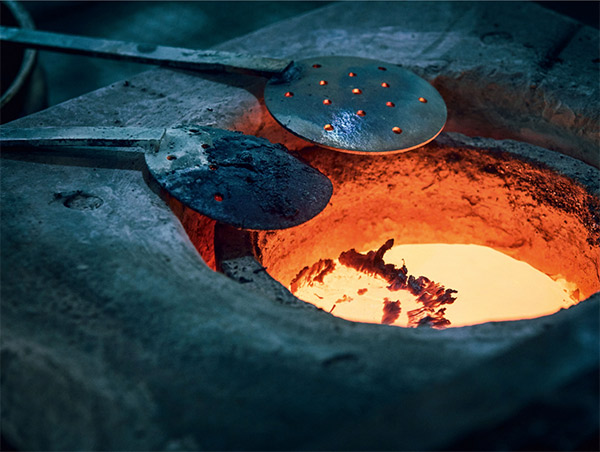
Symbol of the corporate culture
Today, the original version of the sculpture – a 30-centimeter ironwork – has its home in the office of CEO Matthias Altendorf, a gift from Klaus Endress when he handed over the reins of the family company in 2014. Matthias Altendorf is well aware of the symbolism – and the fact that it represents his own responsibility, as well as what the corporate culture means for a company that becomes more global each day.
“Endress+Hauser has experienced strong growth over the past several years. Today we have more than 15,000 employees. Each one serves as an ambassador for our brand and makes sure that our customers are always served with the same high quality standards,” explains the CEO. In order to promote this self-image and the cohesion in the company, we have to cultivate and live up to our values. The sculpture carries this message around the world.”
Whenever Endress+Hauser opens a new building or location, a replica of the sculpture is unveiled, not as some decorative accessory, but as a strong plea for a corporate culture that has pertinence across the globe. From Shanghai, to Madrid, to Abu Dhabi, the head-height artwork greets customers and employees at 38 locations around the world, a number that grows every year.
Locally anchored
Minus the pedestal, the sculpture weighs a solid 120 kilograms. The pedestal, which is always carved from local stone, embodies how the sculpture is locally anchored and also embedded in the environment and society in which the company operates. “Just as customers, employees and shareholders assume responsibility, the company as a whole has an obligation to society and the environment,” explains Klaus Endress. “The sculpture is thus an expression of the company’s full and all-encompassing responsibility.”
Published 01.03.2022, last updated 08.07.2022.
Dive into the world of the process industry through new exciting stories every month with our «changes» newsletter!
